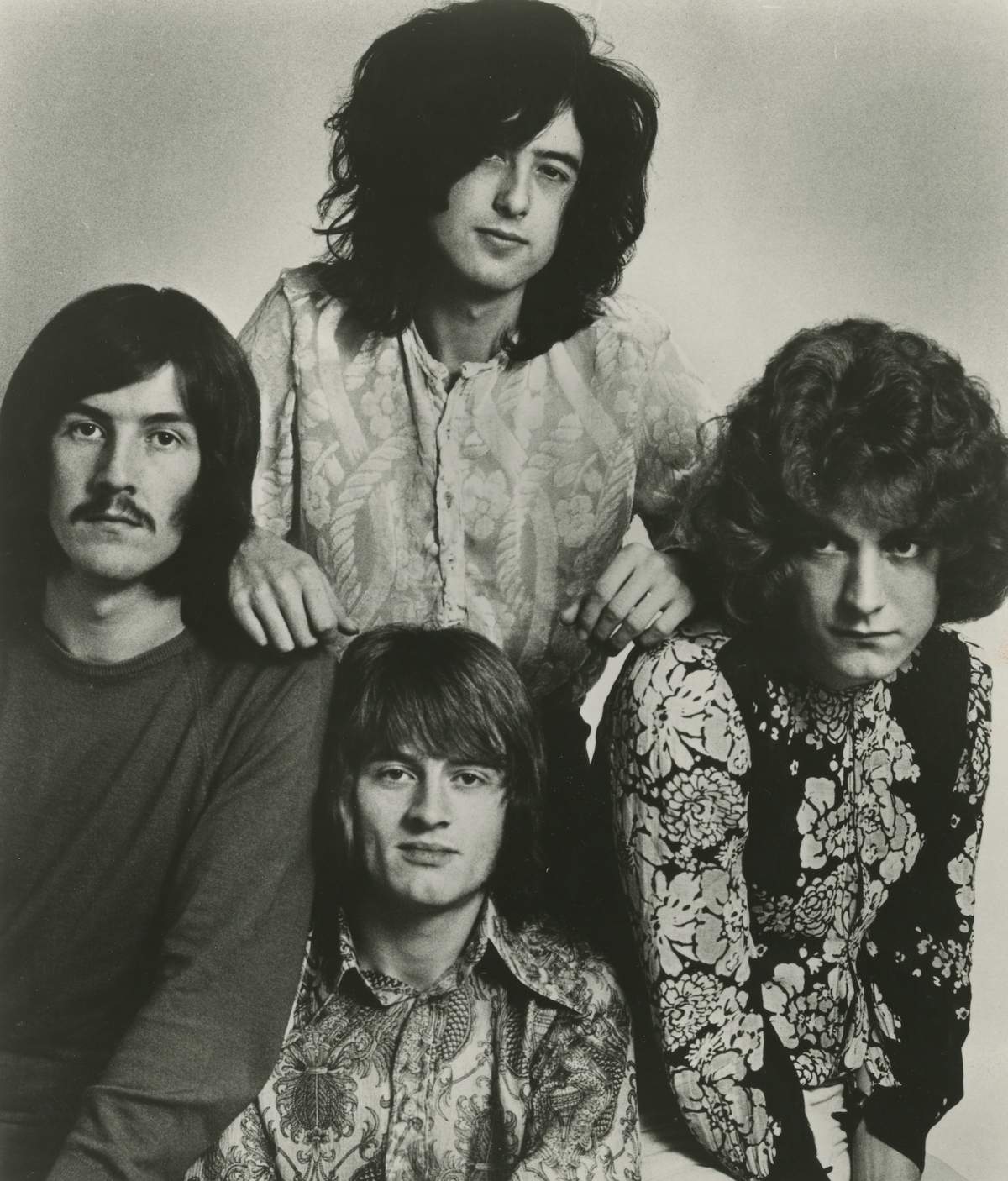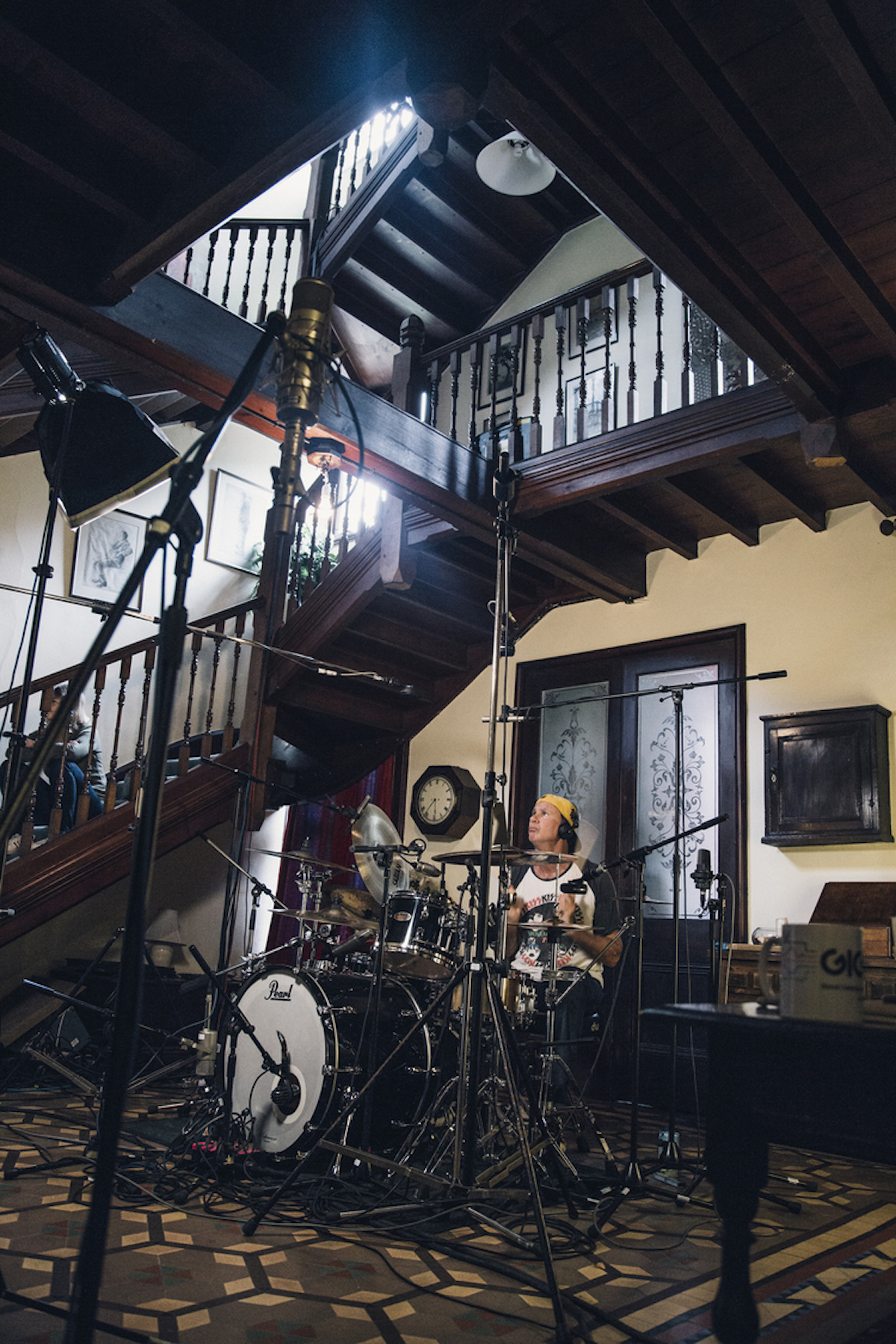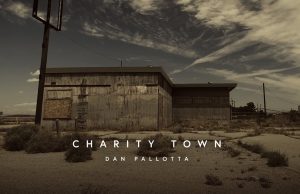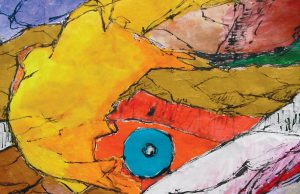 This year my appreciation of Jimmy Page broadened. As he is for millions of others, the guitarist has long been one of my favourites due to his unique, incredible fretwork, songwriting, production and image as a member of Led Zeppelin. But the above video of a concert from Vienna in 1973, shared with me by a friend, enriched my fondness and admiration greatly. (Said video already inspired an earlier Stylus Counsel column — Track 88 | Do Stairway!)
This year my appreciation of Jimmy Page broadened. As he is for millions of others, the guitarist has long been one of my favourites due to his unique, incredible fretwork, songwriting, production and image as a member of Led Zeppelin. But the above video of a concert from Vienna in 1973, shared with me by a friend, enriched my fondness and admiration greatly. (Said video already inspired an earlier Stylus Counsel column — Track 88 | Do Stairway!)
Not only is Page on fire solo-wise, but he plays every part — lead and rhythm — with no second guitarist hiding in the back. He basically never misses a thing, either. Zeppelin never toured with additional musicians. It was just the bandmembers.
I further noticed the complexities and layers of his own guitar when I picked up one of the expanded remastered copies of 1976’s Presence. When you hear the outtakes, it really becomes evident just how much stuff he’s layering in there. All himself, too, and it’s downright shocking how much of this he’s able to pull off live.
See, Page — like bass player/multi-instrumentalist John Paul Jones — was a major in-demand session player when Zep formed in 1968 from the shards of The Yardbirds. I suppose it follows then that they seldom brought anyone else in to perform bits on any of the band’s nine studio albums, or even live.

There are two obvious reasons for this: They didn’t need the help, and they didn’t want it. Zeppelin were a very insular bunch. Tight and protective. They had their own plane, their own label, the members had their own symbols and Page produced all their records himself. There were only a handful of times when other musicians were brought in — never guitarists, bass players or drummers — so, I thought I’d go through them.
There’s only one example on their 1969 self-titled debut. Page’s Black Mountain Side, which was a carryover from his time in The Yardbirds, features a tabla player named Viram Jasani, who had recently worked on John Barry’s score to the Elizabeth Taylor / Richard Burton flop Boom!
The next instance I found of a session player doesn’t happen until two albums later — 1970’s Led Zeppelin III. String players were brought in to perform an Eastern-sounding arrangement written and overseen by Jones for the track Friends. I have no idea who those folks were, but I can tell you Jasani also makes an uncredited return with his tablas.
The untitled fourth album is probably the Zeppelin record which makes the biggest splash in terms of additional musicians. First and foremost is Fairport Convention vocalist Sandy Denny, who even got her own symbol on the sleeve notes. Denny, of course, is featured on The Battle Of Evermore.
The album was recorded in 1971 at Headley Grange — not a recording studio. It was here, at the bottom of a hallway staircase, that John Bonham’s massive When The Levee Breaks drum sound was captured. Because it was a rural estate — a former workhouse — the band hired The Rolling Stones’ mobile studio (a big truck), which was driven to the site by none other than keyboardist and “sixth Stone” Ian Stewart.

Zeppelin made the most of Stewart’s presence. They had him play piano on Rock And Roll and also tracked a jam which would eventually become Boogie With Stu on the 1975 double album Physical Graffiti. That’s where we have to go to find the next example of session musicians (skipping over 1973’s Houses Of The Holy). And again, like with Friends, I have no idea who the uncredited horn and string players were who performed on the epic Kashmir.
And that’s it for non-Zep musicians on their studio albums (and the live double set The Song Remains The Same). The lads basically did everything else themselves: Page on guitars, Jones on bass, Robert Plant on vocals and Bonham on drums. Except with those basic allocations, there are also some deviances and additional instruments — namely with Jones and Page.
Jones plays mandolin, piano, Moog, VCS3 synthesizer, Hammond organ, double bass on Bron-Y-Aur Stomp, Mellotron, Fender Rhodes, the recorders on Stairway To Heaven and backing vocals on parts of Led Zeppelin and Led Zeppelin II, as well as on The Ocean on Houses Of The Holy. Jones occasionally sang Denny’s parts from The Battle Of Evermore when they played it live — certainly he did during the 1977 tour.
Page plays mandolin, lap steel, slide guitar, pedal steel, banjo, bass on That’s The Way, Theremin on Whole Lotta Love and Dazed & Confused, “gizmotron” on In Through The Out Door and backing vocals on Your Time Is Gonna Come, Tangerine and Thank You.
Plant plays harmonica on Led Zeppelin, Led Zeppelin II, Led Zeppelin IV, Physical Graffiti, Presence and In Through The Out Door.
Bonham sings backing vocals on parts of Led Zeppelin, Led Zeppelin II, and on both the studio and live versions of The Ocean. He also plays percussion, timpani and gong.
If you want to hear Page sing a lead, you won’t hear it on any Zeppelin track or any solo effort afterward — you need to go back to 1965. Much the same as Jeff Beck did with Hi Ho Silver Lining, Page issued a debut solo single called She Just Satisfies, which he also sings!
Jones on lead vocals is slightly more common. He is the sole vocalist on his 2001 album The Thunderthief. He takes lead vocals on two tracks on his 1985 soundtrack for the film Scream For Help.
Perhaps these two videos answer the musical pseudo-question — What Is And What Should Never Be.
• • •
Area Resident is an Ottawa-based journalist, recording artist, music collector and re-seller. Hear (and buy) his music on Bandcamp, email him HERE, follow him on Instagram and check him out on Discogs.









































